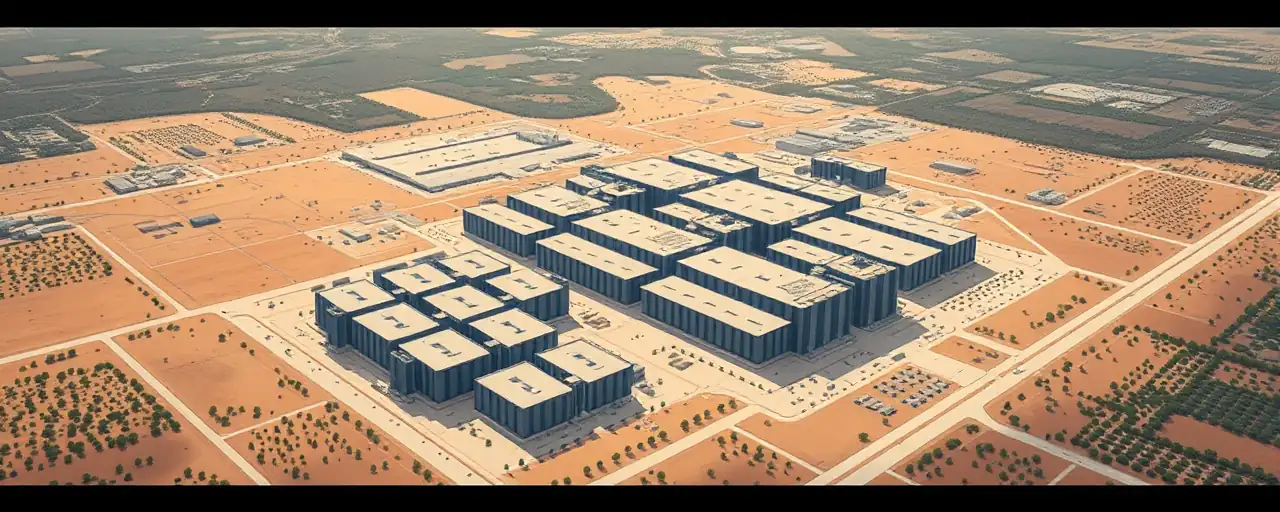A New Era for Texas Manufacturing
Texas is no stranger to big industry, but a new kind of factory is taking root. Two massive facilities, one in Houston and another in Dallas, are set to produce AI supercomputers, machines that could redefine how data powers the world. NVIDIA, a tech giant known for its graphics chips, is behind the project, partnering with Foxconn and Wistron to bring these plants to life. Production is slated to start in just over a year, a timeline that has locals buzzing with anticipation and questions.
The announcement landed like a spark in a state already wired for growth. Texas has long leaned on its energy and manufacturing muscle, but this venture signals a shift toward high-tech horizons. These supercomputers aren’t just gadgets; they’re the backbone of artificial intelligence, crunching data for everything from medical research to self-driving cars. For a state that prides itself on leading, the stakes feel tangible, urgent even.
Yet, beneath the excitement lies a practical reality. Building and running these facilities will test Texas’ ability to adapt. From finding enough skilled workers to securing raw materials, the path forward isn’t a straight line. The project promises to reshape communities, but its success hinges on navigating challenges that no one saw coming a decade ago.
Jobs in the Balance
The numbers are staggering. NVIDIA’s facilities are expected to create hundreds of thousands of jobs over time, from engineers tinkering with circuits to logistics teams moving parts across the globe. Houston and Dallas, already hubs for industry, stand to gain the most. Construction crews are gearing up, local businesses are eyeing new customers, and schools are rethinking what skills kids need to learn.
But there’s a catch. Texas doesn’t have enough trained workers to fill these roles right now. The gap between demand and supply is wide, and closing it will take more than hope. Community colleges and universities are scrambling to expand programs in engineering and tech, while companies are offering training to bridge the divide. Still, some worry that the jobs could draw workers from other states or countries, stirring debates about who gets a piece of the prosperity.
Local leaders see the potential for a ripple effect. A coffee shop near a factory might hire more baristas; a trucking company could add drivers. Yet, not everyone is convinced the benefits will spread evenly. Past projects have sometimes left smaller towns or underserved neighborhoods with little to show. The question isn’t just how many jobs, but who gets them and what they’ll mean for the long haul.
A Supply Chain Under Pressure
Supercomputers don’t spring up overnight, and they don’t run on thin air. Building them requires a steady flow of specialized materials, many of which come from overseas. About six in ten chemicals and components for chips are imported, leaving the industry vulnerable to delays or trade disputes. Texas’ new facilities will need to navigate this maze to keep production humming.
Efforts are underway to bolster domestic supplies. Billions are being poured into making chemicals like ultrahigh-purity hydrogen fluoride right here in the U.S. Trade agreements and partnerships with global firms are also in the works to secure what’s needed. But the clock is ticking, and any hiccup could slow things down. Manufacturers are learning from past shortages, yet the global market remains unpredictable.
For Texas, the challenge is twofold: keep the factories running and build a system that can weather storms. Policymakers and industry heads are pushing for more local production, but that takes time and money. Meanwhile, the world’s hunger for AI keeps growing, and Texas is betting it can deliver without breaking a sweat.
Why Texas, Why Now?
Texas didn’t land this project by accident. The state’s been laying the groundwork for years, offering tax breaks and grants to lure big players. Programs dating back to the early 2000s have made it cheaper for companies to set up shop here. Add in a workforce that’s growing, energy that’s reliable, and a government eager to cut red tape, and it’s no wonder tech firms are flocking.
Federal money has sweetened the deal. Laws passed in recent years have funneled billions into chipmaking, with Texas grabbing a big slice. Companies like Texas Instruments and Samsung have already planted roots, turning cities like Sherman and Taylor into tech hot spots. NVIDIA’s move builds on that momentum, cementing Texas as a place where the future gets built.
Still, not everyone’s cheering. Some argue the state’s generous incentives give too much away, with taxpayers footing the bill for corporate wins. Others point out that rapid growth could strain roads, schools, and housing. The debate isn’t new, but it’s louder now as Texas doubles down on its high-tech gamble.
Looking Ahead
NVIDIA’s investment is a bold stroke, one that could redraw Texas’ economic map. If all goes to plan, Houston and Dallas will anchor a new kind of industry, one driven by AI and the machines that make it possible. The jobs, the tax dollars, the sheer buzz of innovation—it’s a vision that’s easy to get behind. But plans don’t always stick to the script, and Texas will need to stay nimble to make this work.
For now, the state is riding a wave of optimism. Walk through Houston or Dallas, and you’ll hear talk of opportunity, of a chance to be part of something bigger. Yet, the real test lies in execution. Can Texas train enough workers, secure enough supplies, and share the wealth fairly? Those questions linger, and the answers will shape what comes next.
